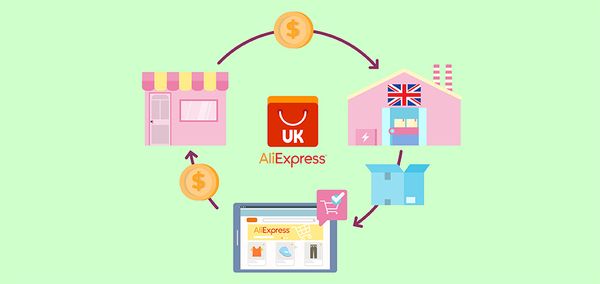How to Do Competetive Analysis in Dropshipping

Competitive analysis is a strategic approach that allows dropshippers to study competitors, identify their strengths and weaknesses, and leverage this information to improve their own business. By understanding what products competitors offer, their pricing strategies, marketing techniques, and target audience, dropshippers can make informed decisions to drive higher sales and profits.
This article explores the concept of competitive analysis, highlights its importance, and provides a step-by-step guide on how to conduct competitive analysis in dropshipping to enhance business performance.
What Is Competitive Analysis
Competitive analysis is the process of evaluating and analyzing the strengths, weaknesses, opportunities, and threats (SWOT) of businesses operating in the same market or industry. In the context of dropshipping, competitive analysis involves studying rival stores that offer similar products, understanding their marketing strategies, pricing models, target audience, and overall business approach.
The primary goal of competitive analysis is to gain insights into the competitive landscape, allowing businesses to improve their product offerings, optimize pricing strategies, and develop effective marketing campaigns. By understanding what makes competitors successful or unsuccessful, dropshippers can make data-driven decisions to differentiate their brand and achieve a competitive edge.
Key elements of competitive analysis in dropshipping include:
- Poduct selection and pricing strategies
- Website design and user experience (UX)
- Marketing and advertising tactics
- Customer engagement and service quality
- Shipping and delivery methods
By analyzing these aspects, dropshippers can identify opportunities for growth and adjust their strategies to outperform competitors.
Why Competitive Analysis Is Important
Conducting competitive analysis in dropshipping offers several benefits that can drive business growth and improve profitability. Some of the key reasons why competitive analysis is essential include:
1. Identifying Market Trends
Competitive analysis helps dropshippers stay updated with the latest market trends and consumer demands. By observing what products competitors are promoting or what marketing tactics they are using, dropshippers can identify emerging trends and align their offerings accordingly. This proactive approach enables businesses to remain competitive and relevant in the market.
2. Understanding Competitor Strategies
Understanding how competitors operate allows dropshippers to identify gaps in their strategies or opportunities to outperform them. For example, if a competitor offers slow shipping times, providing faster delivery can be a key differentiator. Competitive analysis also helps businesses uncover marketing tactics, pricing models, and customer engagement strategies used by competitors.
3. Improving Product Selection

|
Manage Multiple Stores In One Account Multiple Stores Management - Link and manage multiple stores on different platforms in one place |
By analyzing competitors’ product catalogs, dropshippers can identify winning products that are currently in demand. Understanding which products are popular among competitors' customers allows dropshippers to add similar or improved products to their store, maximizing sales potential.
4. Enhancing Pricing Strategies
Pricing plays a critical role in dropshipping success. Competitive analysis helps dropshippers understand how competitors price their products, offer discounts, or create bundled deals. This information can guide businesses in setting competitive prices or offering better deals to attract more customers.
5. Boosting Marketing Efforts
Analyzing competitors’ marketing campaigns, social media presence, and advertising strategies provides valuable insights into what works best in the market. Dropshippers can replicate successful strategies, optimize their ad content, or explore untapped marketing channels to increase visibility and sales.
6. Enhancing Customer Service
Evaluating competitors’ customer service practices, such as response time, return policies, and communication methods, allows dropshippers to identify areas for improvement. Providing superior customer service can lead to higher customer satisfaction and retention rates.
How to Do Competitive Analysis in Dropshipping
Conducting effective competitive analysis requires a structured approach to gather relevant data, analyze it, and implement actionable strategies. Here is a step-by-step guide to conducting competitive analysis in dropshipping:
1. Identify Your Competitors
The first step in competitive analysis is identifying direct and indirect competitors in the dropshipping market. Direct competitors sell similar products to the same target audience, while indirect competitors offer different products that fulfill the same need.
How to Identify Competitors:
- Google Search: Use relevant keywords related to your niche to find competing dropshipping stores.
- Social Media Platforms: Search for brands or stores promoting similar products on platforms like Instagram, TikTok, or Facebook.
- Marketplaces: Explore marketplaces like Amazon, eBay, or AliExpress to find top-performing sellers in your niche.
- Competitor Research Tools: Utilize tools like SimilarWeb, Ahrefs, or SEMrush to discover competitors and analyze their traffic sources.
Once you have identified your competitors, create a list to compare and analyze their business strategies.
2. Analyze Competitors' Product Selection
Understanding what products competitors are selling is crucial in identifying winning products for your dropshipping store.
Key Factors to Analyze:
- Best-selling products
- Product categories
- Seasonal or trending products
- Pricing strategy
Actionable Tip:
Identify products that have high demand and low competition to boost your profit margins. Additionally, look for products with good customer reviews to ensure high customer satisfaction.
3. Study Competitors' Pricing Strategy

|
Adapt Your Product Prices Automatically DSers Automatic Pricing - Pre-set Pricing Rule to mark-up your product price automatically |
Pricing is a significant in customers’ purchasing decisions. Analyze competitors’ pricing models to determine how they position their products.
What to Analyze:
- Product price
- Discounts and promotional offers
- Shipping fees
- Bundle deals or upselling strategies
Actionable Tip:
Position your pricing slightly lower or offer better value (free shipping, faster delivery, bundled offers) to attract more customers.
4. Evaluate Competitors’ Marketing Strategies
Understanding how competitors promote their products is essential to optimizing your marketing efforts. Analyze their advertising channels, social media presence, and promotional tactics.
Where to Analyze:
- Social Media Channels: Check Facebook, Instagram, TikTok, and YouTube for paid ads and content strategies.
- Google Ads: Use tools like SpyFu or SEMrush to analyze competitors’ Google Ads.
- Email Marketing: Sign up for competitors’ email lists to observe their email marketing campaigns.
Actionable Tip: Identify the marketing strategies that generate high engagement and apply similar tactics to increase your store’s visibility.
5. Assess Competitors’ Website Design and User Experience
A well-designed website plays a critical role in conversion rates. Analyze how competitors design their websites to attract and convert visitors.
What to Analyze:
- Website layout and navigation
- Product page design
- Checkout process
- Mobile responsiveness
Actionable Tip: Create a user-friendly and visually appealing website to enhance customer experience and reduce bounce rates.
6. Examine Customer Reviews and Feedback
Customer reviews offer valuable insights into what customers like or dislike about a competitor’s product or service. Analyze reviews from competitors’ product pages or third-party review platforms.
What to Look For:
- Common complaints
- Positive feedback
- Product quality issues
- Shipping and delivery experiences
Actionable Tip: Address the common pain points mentioned in reviews and offer a better customer experience to differentiate your brand.
7. Analyze Competitors’ Shipping and Delivery Time
Fast and affordable shipping is a key factor that influences purchasing decisions. Analyze how competitors manage their shipping methods and delivery times.
Key Factors to Analyze:
- Shipping cost
- Delivery time
- Shipping carriers
- Return policies
Actionable Tip: Partner with suppliers that offer faster shipping and provide clear return policies to improve customer satisfaction.
8. Use Competitive Analysis Tools
Utilizing competitive analysis tools can streamline the data collection and analysis process. Some recommended tools include:
- SimilarWeb: Analyze competitors’ website traffic and sources.
- SEMrush: Track competitors’ SEO and Google Ads performance.
Facebook Ad Library: View active ads from competitors on Facebook and Instagram. - AliExpress Dropshipping Center: Discover top-selling products and supplier information.
Actionable Tip: Regularly monitor competitors' activities to stay ahead in the market and adjust your strategies accordingly.
Conclusion
Competitive analysis is a powerful strategy that enables dropshippers to gain insights into market trends, competitor strategies, and customer preferences. By conducting a thorough competitive analysis, dropshippers can identify profitable products, optimize pricing models, improve marketing campaigns, and enhance customer experiences.
The key to success in dropshipping lies in staying informed about competitors’ activities and continuously adapting to changing market conditions. By leveraging competitive analysis, dropshippers can position their business for sustainable growth, maximize profits, and gain a competitive edge in the dynamic e-commerce landscape.











 Company
Company
 Why Choose DSers
Why Choose DSers
 Blog
Blog
 Help Center
Help Center




 Live Chat
Live Chat